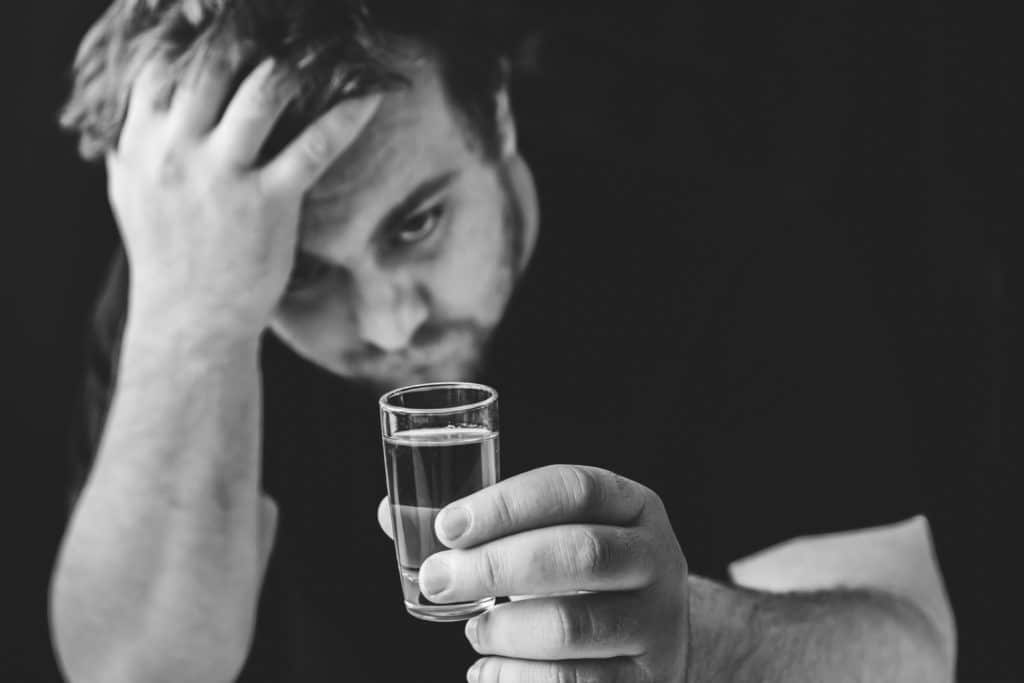What Is Tramadol And Alcohol?
What Is Tramadol?
Tramadol is a prescription medication classified as an opioid analgesic commonly used to alleviate moderate to moderately severe pain. It works by binding to mu-opioid receptors in the brain and inhibiting the reuptake of certain neurotransmitters, such as serotonin and norepinephrine. This dual mechanism contributes to its analgesic effects. Tramadol is available in various forms, including immediate-release and extended-release tablets and an oral solution. The immediate-release form is typically taken every 4 to 6 hours as needed, while the extended-release form provides a more prolonged effect and is taken less frequently.
While tramadol is considered effective in managing pain, it comes with potential side effects, including nausea, dizziness, constipation, and drowsiness. Due to its opioid nature, tramadol has the potential for abuse and dependence. It is essential to use tramadol only under the guidance of a healthcare professional, following prescribed dosages and duration. Additionally, caution should be exercised when considering tramadol use in individuals with a history of substance abuse, respiratory conditions, or other health concerns. As with any medication, it is crucial to discuss any preexisting conditions, drugs, or problems with a healthcare provider to ensure safe and effective use.
What Is Alcohol?
Alcohol, also known as ethanol, is a psychoactive substance that is widely consumed for recreational, social, and cultural reasons. It is a central nervous system depressant, meaning that it slows down brain activity and affects neurotransmitters, resulting in various physiological and psychological effects. Alcoholic beverages are typically classified into three main types: beer, wine, and spirits. The alcohol content is measured as a percentage of pure ethanol by volume. In moderation, alcohol consumption may lead to a sense of relaxation and euphoria. However, excessive and prolonged use can have detrimental effects on health, including liver damage, cardiovascular issues, impaired cognitive function, and an increased risk of accidents and addiction.
The effects of alcohol on an individual can vary based on factors such as body weight, tolerance, and overall health. The Centers for Disease Control and Prevention (CDC) and other health organizations provide guidelines for moderate alcohol consumption, emphasizing limits to minimize health risks. Individuals need to be aware of their tolerance levels, understand potential risks associated with alcohol use, and make informed decisions about consumption based on their health status and circumstances.
Can You Drink Alcohol With Tramadol?
Combining alcohol with tramadol is generally not recommended. Both alcohol and tramadol can depress the central nervous system, leading to drowsiness, dizziness, and impaired coordination. When taken together, the effects of each substance can be enhanced, potentially increasing the risk of accidents or other adverse reactions.
Additionally, both alcohol and tramadol have the potential for respiratory depression, which is a slowing of breathing. Combining them may increase the risk of respiratory issues, especially at higher doses or in individuals with certain health conditions.
Moreover, both substances can cause nausea and gastrointestinal upset, and combining them may exacerbate these side effects.
How Long After Taking Tramadol Can You Drink Tramadol?
It is generally recommended to avoid drinking alcohol while taking tramadol. The exact time frame for avoiding alcohol after taking tramadol can depend on several factors, including the specific formulation of tramadol, your response to the medication, and your overall health.
Tramadol has a duration of action, and the effects may last several hours, especially with extended-release formulations. As a general guideline, it’s advisable to wait until the effects of tramadol have worn off before consuming alcohol. This could mean waiting at least several hours after taking the medication.
However, the interaction between tramadol and alcohol can vary from person to person. Both substances can have central nervous system depressant effects, and combining them may increase the risk of side effects, such as drowsiness, dizziness, and impaired coordination.
To ensure your safety and avoid potential complications, it’s recommended to consult with your healthcare provider about the specific guidelines for alcohol consumption while taking tramadol. They can provide personalized advice based on your medical history and individual circumstances. If you have concerns or questions about the timing of alcohol consumption with tramadol, your healthcare provider is the best source of information for your specific situation.
Can You Overdose On Tramadol And Alcohol?
Combining tramadol and alcohol increases the risk of overdose and can be extremely dangerous. Both tramadol and alcohol have central nervous system depressant effects, and their combination can lead to additive effects, intensifying the depressant actions.
An overdose on tramadol and alcohol can result in severe and potentially life-threatening symptoms, including:
- Respiratory Depression: The combination can lead to slowed or shallow breathing, which may progress to respiratory failure.
- Severe Drowsiness: Excessive sedation and drowsiness may occur, leading to difficulty staying awake or losing consciousness.
- Impaired Coordination: Combining tramadol and alcohol can result in severe impairment of motor skills and coordination, increasing the risk of accidents and injuries.
- Cardiovascular Effects: An overdose may lead to changes in heart rate and blood pressure, which can be dangerous.
- Risk of Seizures: Both tramadol and alcohol have the potential to lower the seizure threshold. Combining them may increase the risk of seizures, especially at higher doses.
- Coma and Death: In severe cases, an overdose can lead to a coma or, in extreme situations, be fatal.
Follow your healthcare provider’s instructions regarding the use of tramadol and avoid alcohol while taking this medication. If you suspect an overdose or experience severe symptoms, seek emergency medical attention immediately.

Skip To:
Learn More:
- Mixing prescription drugs with alcohol, Side Effects, Dangers, Addiction, Commonly Abused Prescription Drugs & Treatment
- Tramadol Withdrawal Symptoms, Timeline, And Detox
- Tramadol Interactions, Types, Risk Factors & Side Effects
- Tramadol Detox, Specifics, Statistics, Symptoms, Withdrawal, Warnings & Treatment Options
- How To Get Alcohol Out Of Your System?
- Calculator for Blood Alcohol Concentration (BAC)
- Drug and Alcohol Evaluation. Drug and Alcohol Evaluation Near Me. What Should You Expect?
- Mixing Antibiotics and Alcohol Effects, Risks, Interactions

Get Your Life Back
Find Hope & Recovery. Get Safe Comfortable Detox, Addiction Rehab & Dual Diagnosis High-Quality Care.
Hotline (855) 695-1160
Tramadol And Alcohol Interactions
Effects Of Mixing Tramadol With Alcohol
Mixing tramadol with alcohol can have several harmful effects due to the combined depressant actions on the central nervous system. Here are some potential effects of combining tramadol with alcohol:
- Increased Sedation: Both tramadol and alcohol can cause sedation and drowsiness. Combining them can lead to heightened sedative effects, making it difficult to stay awake and alert.
- Impaired Coordination: The combination of tramadol and alcohol can severely impair motor skills and coordination, increasing the risk of accidents, falls, and injuries.
- Cognitive Impairment: The central nervous system’s depressant effects can result in cognitive impairment, affecting judgment, decision-making, and reaction times.
- Respiratory Depression: Both substances can slow down breathing. Combining them may lead to respiratory depression, characterized by shallow or slowed breathing, which can be dangerous and even life-threatening.
- Increased Risk of Seizures: Tramadol itself has a seizure risk, and combining it with alcohol can further increase the likelihood of seizures.
- Gastrointestinal Distress: Both tramadol and alcohol can irritate the gastrointestinal tract, leading to nausea, vomiting, and other digestive issues. Combining them may exacerbate these effects.
- Cardiovascular Effects: The combination can lead to heart rate and blood pressure changes, possibly posing risks for individuals with cardiovascular conditions.
- Overdose Risk: Mixing tramadol with alcohol increases the risk of overdose, which can result in severe health complications or even be fatal.
The severity of these effects can vary from person to person and may depend on factors such as individual tolerance, health status, and the amounts of tramadol and alcohol consumed.
To prioritize safety and avoid potential complications, it’s strongly recommended to avoid alcohol while taking tramadol. Always follow the prescribed dosage of tramadol as directed by your healthcare provider, and inform them of any other substances, including alcohol, that you may be using. If you have concerns or questions, consult your healthcare provider for personalized advice based on your health situation.
Get Help. Get Better. Get Your Life Back.
Searching for an Accredited Drug and Alcohol Rehab Centers in Near You?
Even if you have failed previously and relapsed, or are in the middle of a difficult crisis, we stand ready to support you. Our trusted behavioral health specialists will not give up on you. When you feel ready or just want someone to speak to about therapy alternatives to change your life call us. Even if we cannot assist you, we will lead you to wherever you can get support. There is no obligation. Call our hotline today.
FREE Addiction Hotline – Call 24/7What Are The Dangers Of Mixing Tramadol With Alcohol
Mixing tramadol with alcohol poses several dangers due to the combined effects of these substances on the central nervous system. Here are some specific risks associated with combining tramadol and alcohol:
- Increased Central Nervous System Depression: Both tramadol and alcohol are central nervous system depressants. When taken together, they can magnify each other’s depressant effects. This can lead to extreme drowsiness, sedation, and impairment of cognitive and motor functions.
- Respiratory Depression: The combination of tramadol and alcohol can cause respiratory depression, which is a slowing down of breathing. This can result in inadequate oxygen intake, leading to hypoxia and, in severe cases, respiratory failure.
- Impaired Coordination and Judgment: Combining these substances can significantly impair coordination and judgment, increasing the risk of accidents, falls, and injuries.
- Risk of Seizures: Tramadol is associated with an increased risk of seizures, especially at higher doses. Alcohol can lower the seizure threshold. Combining the two substances may elevate the risk of seizures, which can be a severe and potentially life-threatening complication.
- Increased Sedation: The sedative effects of tramadol and alcohol can be intensified when taken together. Excessive sedation can lead to a loss of consciousness, making it challenging to stay awake and alert.
- Gastrointestinal Distress: Both tramadol and alcohol can irritate the gastrointestinal tract, potentially leading to nausea, vomiting, and other digestive issues. Combining them may exacerbate these effects.
- Cardiovascular Effects: The combination can lead to heart rate and blood pressure changes, which may be particularly risky for individuals with cardiovascular conditions.
- Overdose Risk: The risk of overdose is significantly increased when tramadol and alcohol are combined. An overdose can have severe consequences, including coma and death.

Comfortable Facilities & Amenities
High-Quality Addiction & Mental Health Rehabilitation Treatment
Rehab Centers TourRenowned California Addiction Center. Serene Private Facilities. Inpatient rehab programs vary.
Addiction Helpline (855) 695-1160Proven recovery success experience, backed by a Team w/ History of:
15+
Years of Unified Experience
100s
5-Star Reviews Across Our Centers
10K
Recovery Success Stories Across Our Network
- Low Patient to Therapist Ratio
- Onsite Medical Detox Center
- Comprehensive Dual-Diagnosis Treatment
- Complimentary Family & Alumni Programs
- Coaching, Recovery & Personal Development Events

How Much Alcohol Is Safe To Use?
The concept of a “safe” amount of alcohol can vary from person to person and depends on various factors, including individual health, medical history, age, and other medications or substances being used. Additionally, what might be considered a moderate and safe amount for one person may not be suitable for another.
Health organizations, such as the Centers for Disease Control and Prevention (CDC) and the World Health Organization (WHO), provide general guidelines for moderate alcohol consumption. These guidelines are typically based on the average person and may not apply to everyone.
The CDC defines moderate drinking as:
- Up to one drink per day for women.
- Up to two drinks per day for men.
It’s important to note that a “drink” is typically considered to be:
- Twelve (12) fluid ounces of beer (with about 5% alcohol content).
- Five (5) fluid ounces of wine (with about 12% alcohol content).
- 1.5 fluid ounces of distilled spirits or liquor (with about 40% alcohol content).
Exceeding these recommended limits may increase the risk of various health issues, including liver disease, cardiovascular problems, and an increased risk of accidents and injuries. Additionally, certain medical conditions, medications, and individual factors may necessitate complete abstinence from alcohol.
How Much Tramadol Is Safe To Use?
The safe use of tramadol depends on various factors, including individual health, medical history, and the specific condition being treated. Tramadol is a prescription medication, and it’s crucial to follow the dosage and instructions provided by your healthcare provider.
The typical starting dose of tramadol for adults is 25 mg to 50 mg every 4 to 6 hours as needed for pain. The dosage may be adjusted based on the individual’s response to the medication and the severity of the pain.
The maximum recommended dose for the immediate-release formulation is usually 400 mg daily. The maximum recommended dose for the extended-release formulation is often 300 mg daily. It’s important to note that exceeding these recommended doses can increase the risk of side effects, including seizures and respiratory depression.
Here are some general guidelines for the safe use of tramadol:
- Follow Your Healthcare Provider’s Instructions: Take tramadol as your healthcare provider prescribes. Do not adjust the dosage or frequency without consulting them.
- Avoid Alcohol: As discussed earlier, it is generally advised to avoid alcohol while taking tramadol due to the increased risk of central nervous system depression and other adverse effects.
- Monitor for Side Effects: Be aware of potential side effects of tramadol, including drowsiness, dizziness, nausea, and constipation. If you experience severe or persistent side effects, contact your healthcare provider.
- Inform Your Healthcare Provider: Provide your healthcare provider with a complete medical history, including any other medications, supplements, or health conditions you may have. This information will help them determine the appropriate dosage and monitor for potential interactions.
- Avoid Abrupt Discontinuation: If you need to stop taking tramadol, consult your healthcare provider for guidance on how to taper the dosage to avoid withdrawal symptoms gradually.
Tramadol has the potential for abuse and dependence. Misuse of tramadol, especially at higher doses than prescribed, can lead to serious health risks. If you have concerns or questions about using tramadol, consult your healthcare provider for personalized advice based on your health situation.
World-class, Accredited, 5-Star Reviewed, Effective Addiction & Mental Health Programs. Complete Behavioral Health Inpatient Rehab, Detox plus Co-occuring Disorders Therapy.
CALL (855) 695-1160End the Addiction Pain. End the Emotional Rollercoaster. Get Your Life Back. Start Drug, Alcohol & Dual Diagnosis Mental Health Treatment Now. Get Free No-obligation Guidance by Substance Abuse Specialists Who Understand Addiction & Mental Health Recovery & Know How to Help.
The Dangers Of Mixing Alcohol And Drugs
Mixing alcohol with drugs, including prescription medications, over-the-counter drugs, or illicit substances, can significantly amplify health risks and pose serious dangers. The combination of alcohol and certain drugs can lead to unpredictable and potentially life-threatening effects due to interactions that affect the central nervous system, metabolism, and other physiological processes. Here are some general dangers associated with mixing alcohol and drugs:
- Increased Central Nervous System Depression: Both alcohol and many drugs, including opioids, benzodiazepines, and some sleep medications, act as central nervous system depressants. Combining them can lead to excessive sedation, slowed breathing, and impaired cognitive function, increasing the risk of accidents, injuries, or even respiratory failure.
- Intensified Side Effects: Mixing alcohol and certain medications may enhance side effects such as drowsiness, dizziness, nausea, and gastrointestinal upset. This can lead to discomfort and compromise the individual’s ability to function normally.
- Impaired Judgment and Coordination: Both alcohol and drugs can individually impair judgment, coordination, and reaction times. Combining them exacerbates these effects, increasing the risk of accidents and making activities like driving dangerous.
- Risk of Overdose: The combined effects of alcohol and certain drugs may lead to overdose, especially if an individual takes higher doses than prescribed or intended. Overdose symptoms can range from severe sedation to respiratory distress and, in extreme cases, death.
- Increased Toxicity: The liver plays a crucial role in metabolizing both alcohol and many drugs. Combining them can overwhelm the liver, leading to increased toxicity and potential damage to this vital organ.
- Cardiovascular Risks: The combination of certain drugs and alcohol can affect heart rate and blood pressure, leading to cardiovascular complications, including an increased risk of heart attack or stroke.
- Potential for Unpredictable Reactions: Interactions between alcohol and drugs can be unpredictable and vary from person to person. Factors such as age, overall health, and individual responses to substances contribute to the reaction variability.
Consult with a healthcare professional before consuming alcohol while taking any medication, including over-the-counter drugs and supplements. Healthcare providers can guide the safety of combining specific substances based on individual health conditions and medication regimens. Mixing alcohol and drugs without proper guidance can have serious consequences, and seeking medical advice is essential for minimizing risks and ensuring overall health and safety.
Experience Transformative Recovery at the We Level Up California Treatment Center.
See our authentic success stories. Get inspired. Get the help you deserve.



Start a New Life
Begin with a free call to an addiction & behavioral health treatment advisor. Learn more about our dual-diagnosis programs. The We Level Up treatment center network delivers recovery programs that vary by each treatment facility. Call to learn more.
- Personalized Care
- Caring Accountable Staff
- World-class Amenities
- Licensed & Accredited
- Renowned w/ 100s 5-Star Reviews
We’ll Call You
Amber’s Truly Inspiring Heart Warming Addiction Recovery Sobriety Story. Beat Drug & Alcohol Abuse.
Search We Level Up CA Tramadol And Alcohol, Drug & Alcohol Rehab / Detox & Mental Health Topics & Resources
Sources
- Traynor MJ, Brown MB, Pannala A, Beck P, Martin GP. Influence of alcohol on the release of tramadol from 24-h controlled-release formulations during in vitro dissolution experiments. Drug Dev Ind Pharm. 2008 Aug;34(8):885-9. doi: 10.1080/03639040801929240. PMID: 18618305. https://pubmed.ncbi.nlm.nih.gov/18618305/
- Ripple MG, Pestaner JP, Levine BS, Smialek JE. Lethal combination of tramadol and multiple drugs affecting serotonin. Am J Forensic Med Pathol. 2000 Dec;21(4):370-4. doi: 10.1097/00000433-200012000-00015. PMID: 11111800. https://pubmed.ncbi.nlm.nih.gov/11111800/
- National Institute on Alcohol Abuse and Alcoholism. (2014). Harmful interactions: Mixing alcohol with medicines.
- National Institute on Drug Abuse. (2018).The Science of Drug Use and Addiction: The Basics.
- Dhesi M, Maldonado KA, Maani CV. Tramadol. [Updated 2023 Apr 16]. In: StatPearls [Internet]. Treasure Island (FL): StatPearls Publishing; 2023 Jan-. Available from: https://www.ncbi.nlm.nih.gov/books/NBK537060/
- Medline Plus – Tramadol – https://medlineplus.gov/druginfo/meds/a695011.html
- Sidana A, Domun I, Arora P. Tramadol withdrawal psychosis. Indian J Psychiatry. 2019 Nov-Dec;61(6):655-656. doi: 10.4103/psychiatry.IndianJPsychiatry_11_19. PMID: 31896879; PMCID: PMC6862981. https://www.ncbi.nlm.nih.gov/pmc/articles/PMC6862981/
- Cohen B, Ruth LJ, Preuss CV. Opioid Analgesics. [Updated 2023 Apr 29]. In: StatPearls [Internet]. Treasure Island (FL): StatPearls Publishing; 2023 Jan-. Available from: https://www.ncbi.nlm.nih.gov/books/NBK459161/
- Chou R, Hartung D, Turner J, et al. Opioid Treatments for Chronic Pain [Internet]. Rockville (MD): Agency for Healthcare Research and Quality (US); 2020 Apr. (Comparative Effectiveness Review, No. 229.) Available from: https://www.ncbi.nlm.nih.gov/books/NBK556253/
- Zullo AR, Danko KJ, Moyo P, et al. Prevention, Diagnosis, and Management of Opioids, Opioid Misuse, and Opioid Use Disorder in Older Adults [Internet]. Rockville (MD): Agency for Healthcare Research and Quality (US); 2020 Nov. (Technical Brief, No. 37.) Available from: https://www.ncbi.nlm.nih.gov/books/NBK564144/
- National Institute on Drug Abuse (NIDA) (www.drugabuse.gov/)
- National Institute on Alcohol Abuse and Alcoholism
- MedlinePlus. A service of the U.S. National Library of Medicine and the National Institutes of Health.





